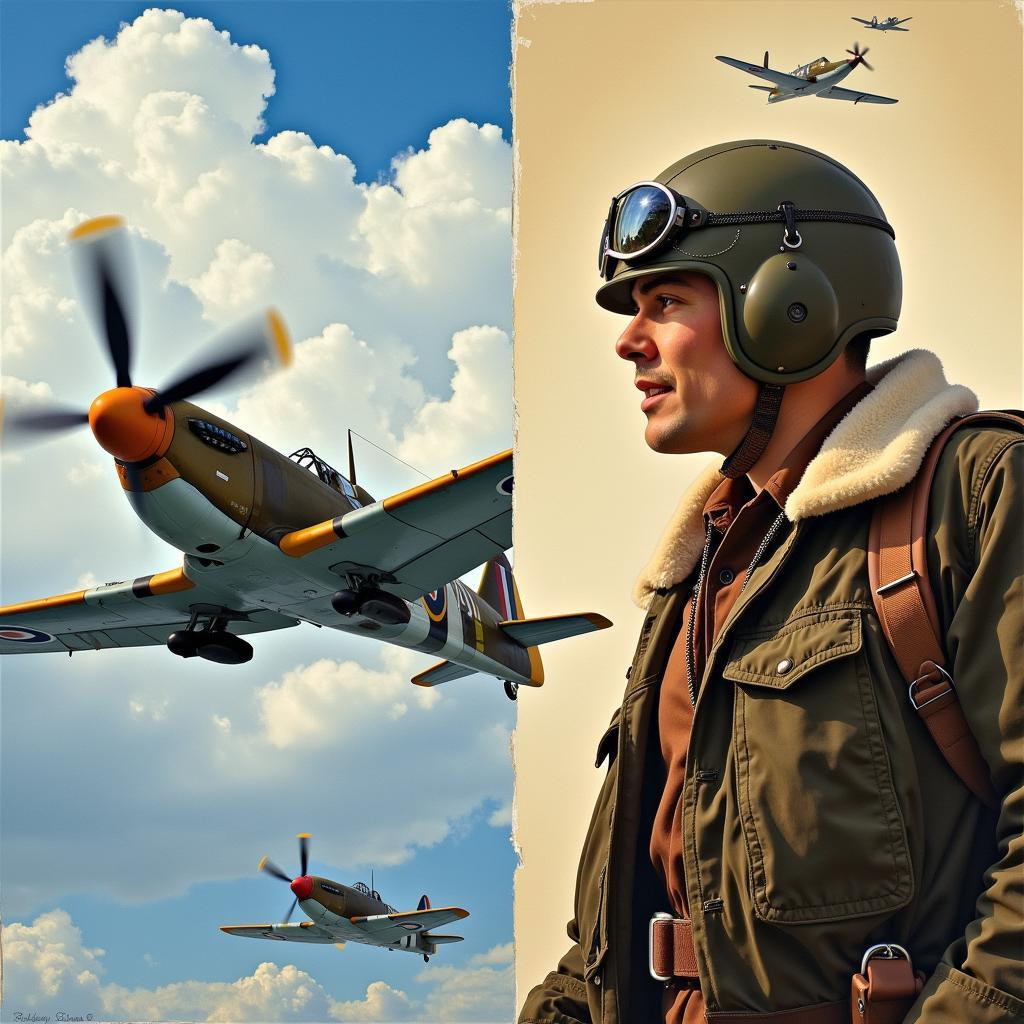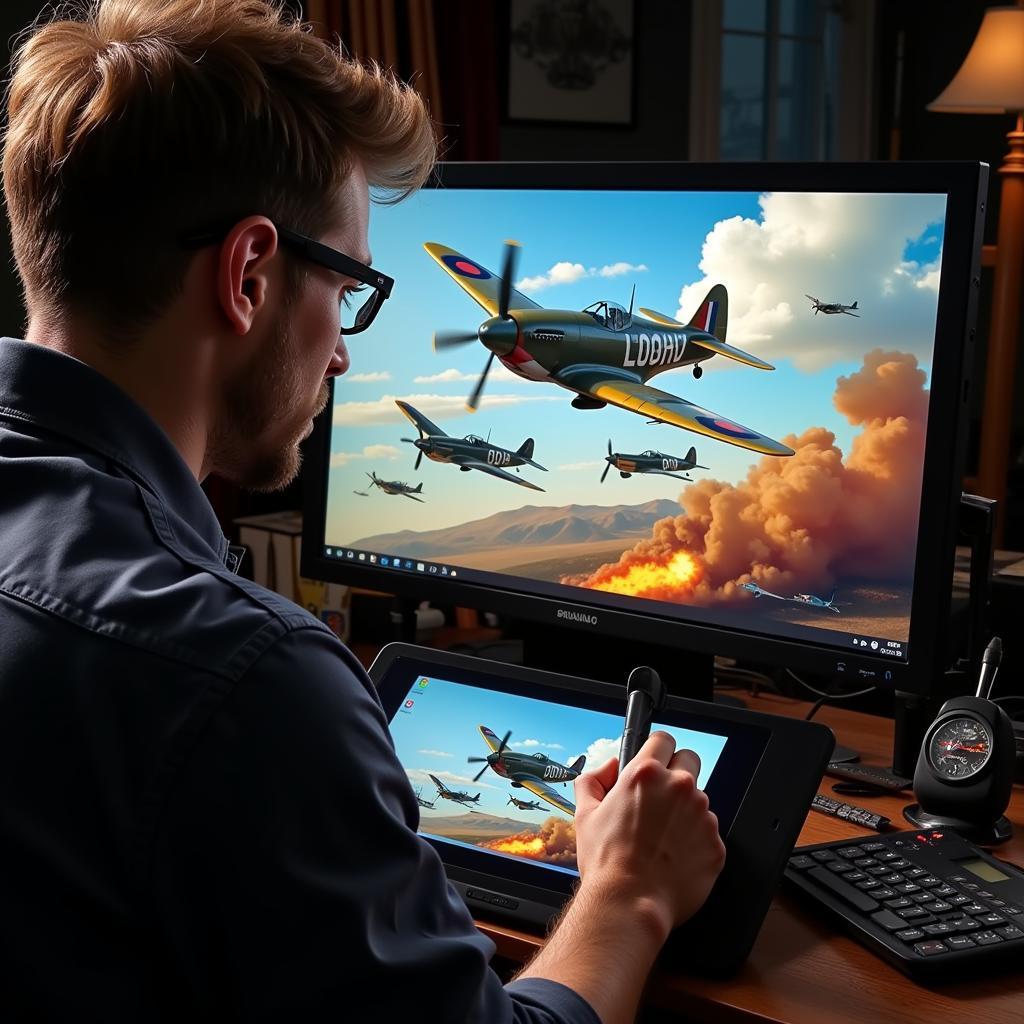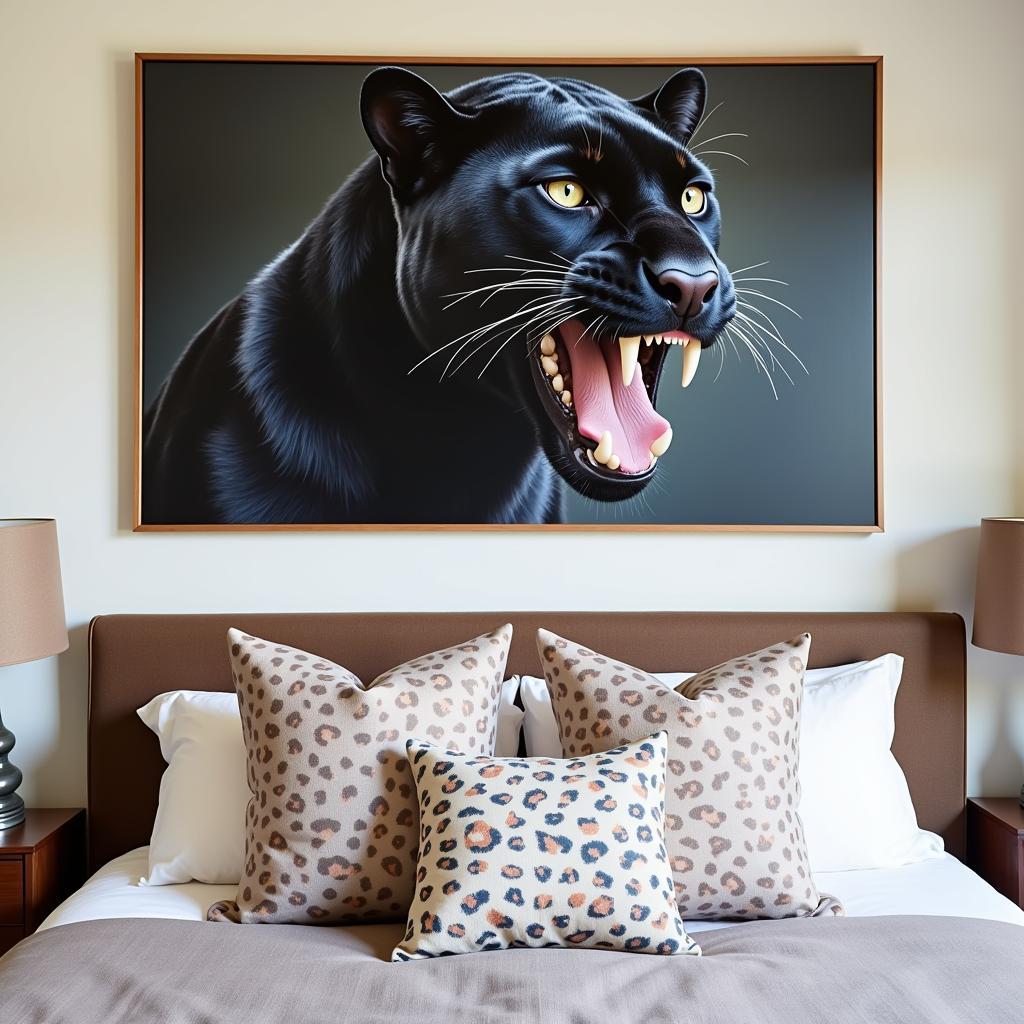World War Two Aviation Art: A Digital Frontier
World War Two Aviation Art captures the raw power and drama of aerial combat like no other genre. From the iconic silhouettes of Spitfires and Mustangs to the devastating scenes of bombing raids, this art form offers a unique window into a pivotal moment in history. This article will explore the captivating world of WWII aviation art, examining its historical significance, diverse styles, and the exciting possibilities offered by digital techniques.
Check out our cool nose art t shirts.
The Rise of WWII Aviation Art: Documenting History in the Skies
The Second World War saw a dramatic increase in the importance of air power, and with it, a surge in artistic depictions of aircraft and aerial combat. These works served not only as propaganda tools but also as vital historical records, capturing the technical details of the aircraft, the strategies of aerial warfare, and the human stories of the pilots and crews who risked their lives in the skies. From the meticulously detailed technical drawings used for aircraft identification to the emotionally charged paintings depicting dogfights and bombing missions, WWII aviation art provides an invaluable visual record of this tumultuous era.
Styles and Techniques: From Realism to Romantic Idealism
World War Two aviation art encompasses a broad range of styles and techniques. Some artists focused on realistic depictions of aircraft and aerial combat, striving for accuracy in their portrayal of machines and maneuvers. Others adopted a more romantic or idealized approach, emphasizing the heroism and courage of the pilots. Still others employed a stylized or graphic style, capturing the dynamic energy of aerial combat in bold, expressive lines and colors. This diversity of artistic approaches reflects the multifaceted nature of the war itself, encompassing both the technical aspects of aviation and the profound human impact of the conflict.
 WWII Aviation Art: Realism vs. Romanticism
WWII Aviation Art: Realism vs. Romanticism
What were the most popular subjects in WWII aviation art?
The most popular subjects included iconic aircraft like the Spitfire, Mustang, and Messerschmitt Bf 109, as well as dramatic scenes of dogfights, bombing raids, and carrier operations. Portraits of famous pilots and depictions of nose art were also common themes.
Digital Revolution: Taking Flight in the 21st Century
The advent of digital technology has revolutionized the world of WWII aviation art, opening up exciting new possibilities for artists and enthusiasts alike. Digital tools allow artists to create incredibly detailed and dynamic images, experimenting with light, color, and composition in ways that were previously impossible. Furthermore, digital platforms provide unprecedented opportunities for artists to share their work with a global audience, fostering a vibrant online community dedicated to this fascinating art form.
Explore more about airborne art.
 Digital WWII Aviation Art Creation
Digital WWII Aviation Art Creation
How has digital technology impacted WWII aviation art?
Digital technology has made creating and sharing WWII aviation art more accessible than ever before. Artists can now experiment with a wide range of digital tools and techniques, while online platforms provide new avenues for showcasing and distributing their work.
Preserving the Legacy: Honoring History Through Art
World War Two aviation art serves as a powerful reminder of a pivotal period in human history. By capturing the drama and intensity of aerial combat, these works offer a unique glimpse into the experiences of those who fought in the skies. Whether created with traditional mediums or cutting-edge digital tools, WWII aviation art continues to captivate and inspire, ensuring that the stories of courage and sacrifice will never be forgotten.
Learn more about world war two aircraft art.
Why is WWII aviation art still relevant today?
WWII aviation art remains relevant because it offers a unique visual record of a crucial period in history. It serves as a testament to human ingenuity, courage, and the impact of technological advancements on warfare, continuing to inspire and educate audiences today.
Conclusion
World War Two aviation art provides a powerful lens through which to understand the complexities and impact of this global conflict. From its historical significance to its diverse artistic expressions, this genre continues to fascinate and inspire. As digital technologies continue to evolve, the future of World War Two aviation art promises even more exciting possibilities for artistic exploration and historical preservation. The genre allows us to connect with the past, appreciate the sacrifices made, and marvel at the artistry that emerged from the chaos of war.
FAQs
- What is the most iconic piece of WWII aviation art? There is no single “most iconic” piece, as different works resonate with different people. However, certain images, like those depicting famous aces or specific battles, have achieved widespread recognition.
- Where can I find original WWII aviation art? Original artwork can be found in museums, galleries, and private collections. Auctions and specialized dealers are also good sources.
- Are there modern artists still creating WWII aviation art? Yes, many contemporary artists continue to create works inspired by WWII aviation. Some focus on historical accuracy, while others explore new interpretations of classic themes.
- What are some common themes in WWII aviation art? Dogfights, bombing missions, portraits of pilots, and depictions of aircraft nose art are frequently recurring themes.
- How can I learn more about WWII aviation art? Books, documentaries, museum exhibits, and online resources offer a wealth of information on this fascinating subject.
For any assistance, please contact us at Phone Number: 02462573573, Email: danteum@gmail.com, or visit our address: Savico Megamall, 7-9 Đ. Nguyễn Văn Linh, Gia Thụy, Long Biên, Hà Nội 10000, Việt Nam. Our customer service team is available 24/7.


